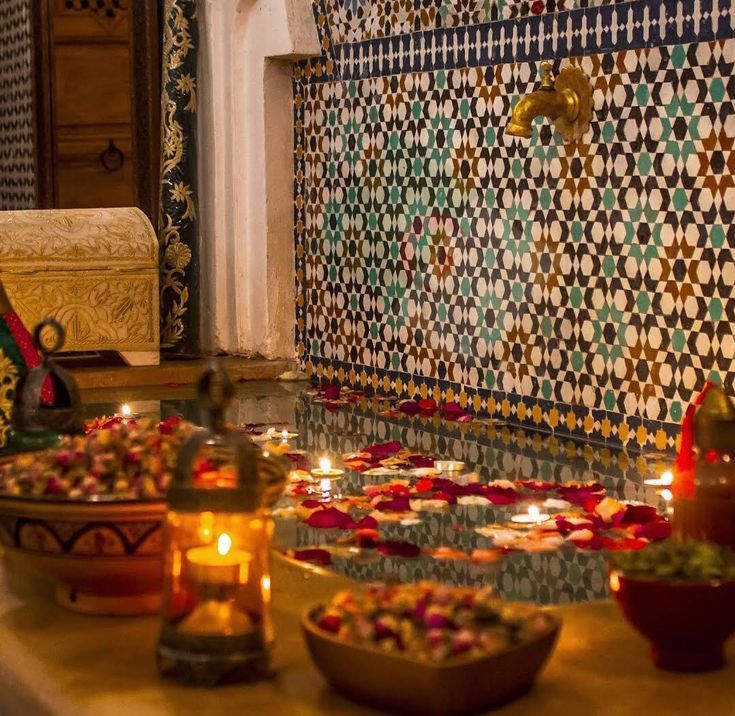

The Ancient Art of Hammam: Middle Eastern Rituals for Body, Mind & Soul
Long before spas and serums, wellness in the Middle East was sacred, sensory, and deeply rooted in nature. From the majlis gatherings of the Emirates to the marble hammams of Morocco and the perfumed rituals of Persia, bathing was more than just hygiene. It was a reset for the body, mind, and spirit.
Today, we chase peace through a hundred wellness apps. But our ancestors?
They found it in steam, sidr leaves, rose water, and community.
Rituals Woven Through the Region
In the Emirates…
Women gathered in private homes or bathhouses for deep cleansing rituals.
-
Sidr leaves were crushed into a paste or brewed into water to wash away negativity, cleanse the hair, and calm the body.
-
Sandalwood and saffron were ground and added to oils or masks to brighten skin and uplift the senses.
-
After the bath, bukhoor smoke drifted through the air, perfuming the hair and home, creating a sacred pause before re-entry into daily life.
“It wasn’t just about getting clean. It was about getting quiet.”
In Morocco…
The hammam was (and still is) a cornerstone of community. Women would spend hours in the steam, exfoliating with black olive soap and kessa mitts, then rinsing with warm water poured from buckets.
-
Skin was slathered with rhassoul clay, drawing out impurities.
-
Rose water was used as a cooling toner.
-
Hair was coated in argan oil, rich in vitamins and tradition.
In Persia…
Bathing was a multisensory ritual, often taking place in ornate public bathhouses with stunning tilework and echoes of poetry.
-
Baths were infused with rose petals, jasmine, and orange blossom.
-
Henna and saffron were blended into beauty masks.
-
It wasn’t uncommon to sip herbal tea and share stories between rinses.
In the Levant…
Levantine women used laurel oil soap (Saboun Ghar) - simple, natural, and still iconic today.
-
Post-bath, skin was massaged with olive oil, and scents like amber and musk lingered in the air.
-
Herbal infusions with chamomile, mint, or lavender were brewed for sipping - wellness from inside and out.
A Legacy of Natural Ingredients
These rituals weren’t filled with hard-to-pronounce chemicals or 10-step routines.
They were simple, nature-led, and intentional.
Used for centuries:
-
Sidr leaves – anti-inflammatory, grounding, and spiritually cleansing
-
Rose water – soothing for skin and soul
-
Laurel & olive soap – antibacterial and gentle
-
Honey, oats & clays – nourishing masks from the pantry
-
Bukhoor & incense – to mark the end of the ritual with scent and spirit
It Was Never Just a Bath
Bathing in Middle Eastern culture was about ritual, not routine. A moment to reconnect. To pause. To reflect. Often shared with mothers, sisters, aunties the experience was as healing emotionally as it was physically.
Why It Still Matters
Today’s world is louder. Busier. But the wisdom remains.
These ancient practices remind us:
-
To let our baths be unrushed
-
To let scent and touch ground us again
-
To treat cleansing as a form of care, not just cleanliness
You don’t need a grand hammam or elaborate setup.
Just intention, warmth, and maybe a bowl of sidr leaf water or rose petals in your next soak.

